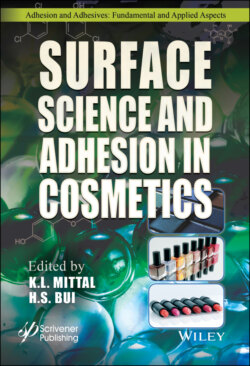Читать книгу Surface Science and Adhesion in Cosmetics - Группа авторов - Страница 83
3.10 Removal of the UV Nail Gel From the Human Nail Plate
ОглавлениеUV nail gel technology has an issue with the removal from the human nail. All the technology developed that we have discussed so far relates to the ability to create a heavily crosslinked coating that can remain on the human nail for over two weeks without chipping or peeling [23]. However, this heavily cross-linked UV cured coating now results in a coating that is difficult to remove either by using a solvent soak or by mechanically grinding it away. Cook [24] has developed technology that allows the coating to UV crosslink but utilizes an ‘Achilles heel’ in the polymer backbone so when the user wants to remove the nail gel coating it will not require excessive efforts. This technology teaches that if one uses a photopolymerizable cellulose ester as the ‘Achilles heel’ then removal should require far less effort than what is traditionally needed. As can be seen in Table 3.9 the use of the photopolymerizable cellulose ester in a potential UV nail gel application results in a coating after UV curing that shows solubility in the acetone soak yet still retains the MEK (Methyl Ethyl Ketone) double rubs needed from a performance aspect.
Other formulations in Table 3.9 have higher crosslinking but would require much removal efforts. Unfortunately, all of this work was done using high performance UV cure light technology that we have described earlier and would need to be reformulated to meet the needs of the lower UV energy GA-FL and LED UV cure light technology [24]. Another approach for the removal of UV cure nail gels is the use of an alkoxylated lanolin oil and acetone. The art taught in this recent patent claims that this system based on 2.5% alkoxylated lanolin oil in acetone was able to remove UV cure nail gel within 168 seconds (2.8 minutes) [25].
